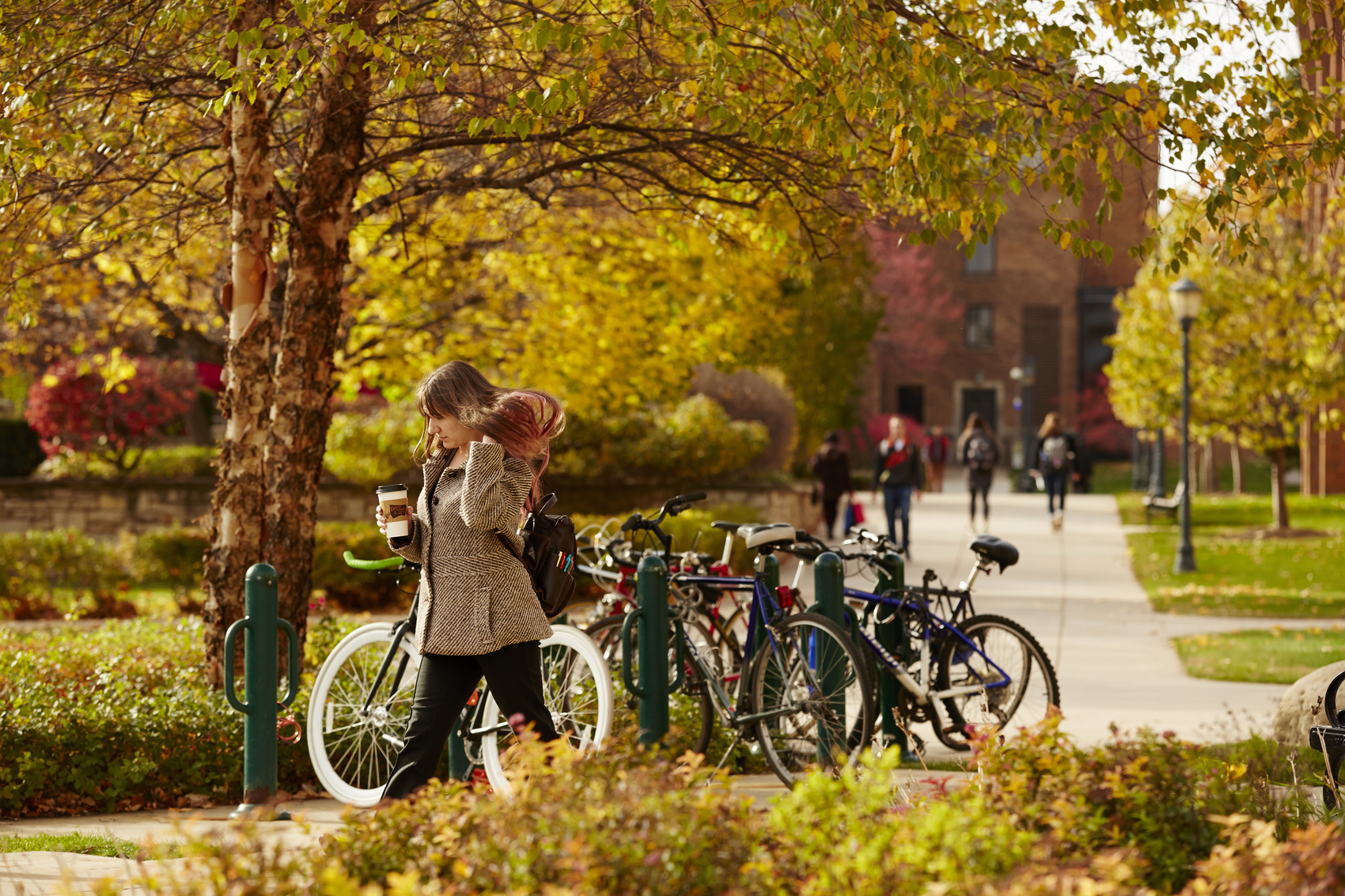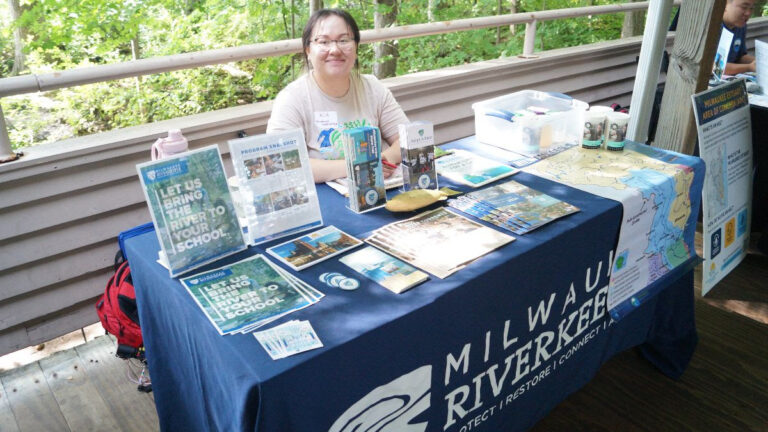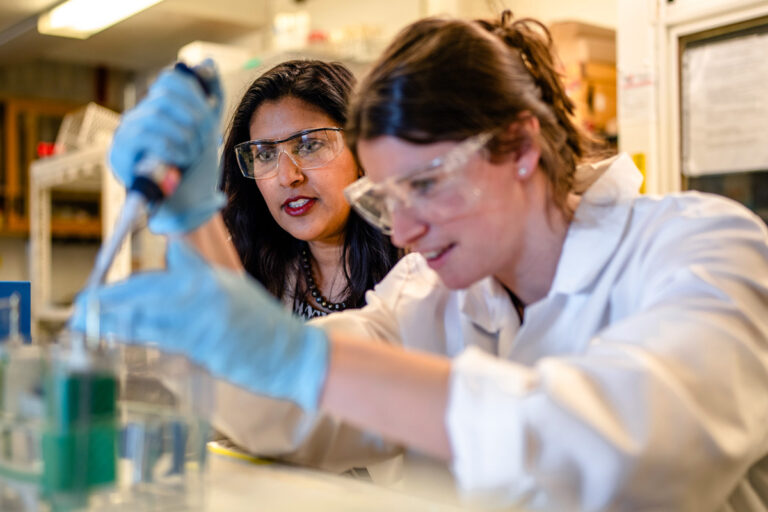Located in downtown Milwaukee, Wisconsin, Marquette University is an oasis of biodiversity. Most notably, Marquette’s high concentration of Wisconsin-native trees makes the campus a unique space for research, appreciating nature, discovering sacred spaces and more.
In 2012, Facilities Planning and Management realized the opportunity Marquette’s campus offers the community and began taking inventory of Wisconsin-native trees, with the goal to create an interactive geographic information system (GIS) map the community could use to locate and learn more about the native trees.
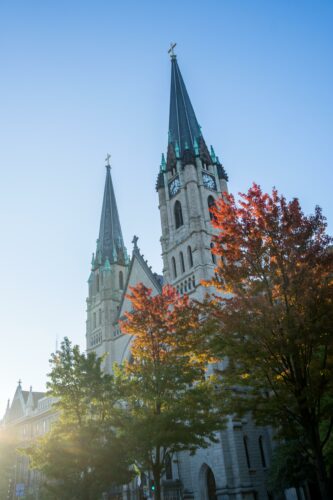
“The intention of the map is to bring awareness, not just to students but the larger community as well, of the importance of native trees and increasing the tree canopy of urban spaces,” says Chelsea Malacara, the sustainability and energy management coordinator for Facilities Planning and Management. “There are a lot of beautiful green spaces on campus, and we are committed to cultivating more that increase campus biodiversity.”
Sarah Knott, a senior majoring in environmental studies, is the primary intern working on the Marquette campus tree inventory map project. She oversees identifying all trees on campus, in addition to taking data on the diameter of each tree, its overall condition and the crown light exposure.
“I took an interest in this project because my family has a tree farm in central Wisconsin and had some prior knowledge on tree identification,” Sarah says. “It has been a really fun and unique way to be in touch with campus and learn more about what it environmentally has to offer.”
The digital map is expected to be released at the end of the year.
In addition to the campus-GIS map, the team will use Marquette’s inventory to add to Wisconsin’s Department of Natural Resources’ (DNR) statewide tree inventory database called TreePlotter.

“Another cool aspect of adding our inventory to this database,” Malacara says, “is we can expand the information that will be available on the trees such as diameter, condition of the tree and crown light exposure.”
These data points can then be used in the TreePlotter database to calculate the ecosystem-benefits of the individual tree, including stormwater benefits (runoff avoided and monetary benefits of runoff avoided), pollutants removed, carbon sequestered and carbon storage.
An opportunity for all
Ultimately Facilities Planning and Management desires the GIS map to be an added resource to classrooms, research groups, faith groups and more.
Malacara says, “There’s a lot that could blossom from the map’s original concept.”
One of these potential opportunities is utilizing Marquette’s campus as a living lab.
“The hope is that the map will spark inspiration for faculty to design curriculum that uses the spaces we have here,” Malacara says. “I’ve talked to some different professors about this project, and they’re really excited to use this map for their own research or courses.”
There is also an opportunity for this map to offer additional sacred spaces on campus. Current Sacred Spaces include various artwork, chapels, churches, rooms and statues around campus, but in line with Marquette’s Jesuit mission to provide an environment that fosters spiritual growth in people of all faiths, this map may inspire connection with the earth and God’s creation.
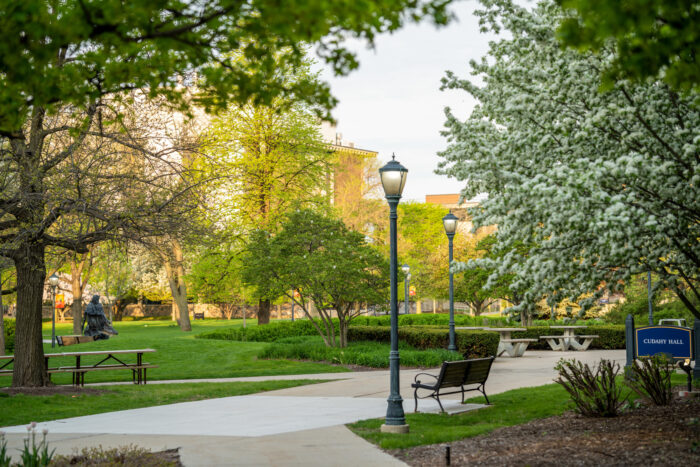
Moving forward intentionally
Although a seemingly small project, Malacara explains, the map offers great potential for raising awareness with audiences about the importance of sustainability.
“As we grow our campus and rethink spaces, we aim to steward the land in the best way possible,” she says.
Knott also hopes the project will raise student environmental awareness.
“I hope students develop a better sense of their surroundings and understand what natural diversity Milwaukee and Wisconsin has to offer even in our urban setting,” she says. “Most students may not consider what’s naturally around them, so this project can spark thoughts on the importance of what sustainable actions Marquette takes.”
If you would like to learn more information about the campus tree digital map and what it may offer Marquette, contact Malacara.
